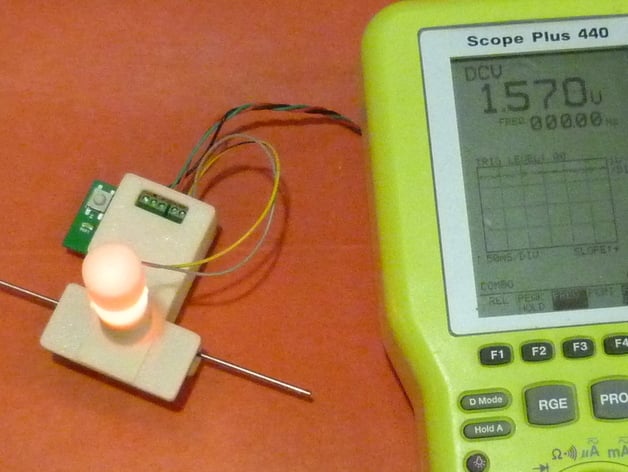
Filament Width Sensor Prototype Version 3
thingiverse
This prototype optimizes an optical sensor that gauges plastic filament breadth in real-time as it's extruded into a 3D printer or a filament extruder. This marks the third iteration (prior ones available on Thingiverse). With a real-time measurement of width, the 3D printer can automatically adjust the flow of material for varying filament widths. If there's deviation between spools, you won't need to calibrate your slicer settings for that variance in width, allowing the g-code to be completely independent of the diameter of the filament. Filament extruders use the measured data as feedback in the extrusion process. This edition features a custom-designed PC board along with housing. Marlin firmware was tweaked to read filament diameter in real-time and adjust the extrusion rate. The sensor generates a voltage, measured in millimeters (with 3 volts corresponding to 3mm), which is displayed on a voltmeter. Some updates to Marlin enabled it to compensate for delays in measurements by incorporating a buffer. This version is compatible with the Lyman extruder design. Working with Hugh allowed incorporation of the sensor into their system and helped develop the controller. Check out the earlier prototype: http://www.thingiverse.com/thing:380987 Changes to Version 3: PC board modifications involved using screw terminals for connections, as well as removing unnecessary components; its dimensions remain the same. For ease, two distinct case designs exist – one tailored to 3D printers and the other to filament extruders, while sharing the same PC board. Update (09/21/16): New firmware features detection of calibration rods at 1.57mm and 3.00mm to automatically set up your system for either. All information is documented at prior versions on Thingiverse. Devoted users are highly encouraged to modify, enhance, and push the development forward! Instructions on construction begin with creating ABS base, mounting an Arduino-compatible mcu board and its connections; setting LED and circuitry wiring, followed by adding wires. This was done by purchasing appropriate connectors from http://shop.hackerboards.com. After this is assembling the casing that will surround all electronic elements in order not only protect them but also aesthetically present themselves when placed around one’s body as jewelry while working on DIY projects within computer labs
With this file you will be able to print Filament Width Sensor Prototype Version 3 with your 3D printer. Click on the button and save the file on your computer to work, edit or customize your design. You can also find more 3D designs for printers on Filament Width Sensor Prototype Version 3.
